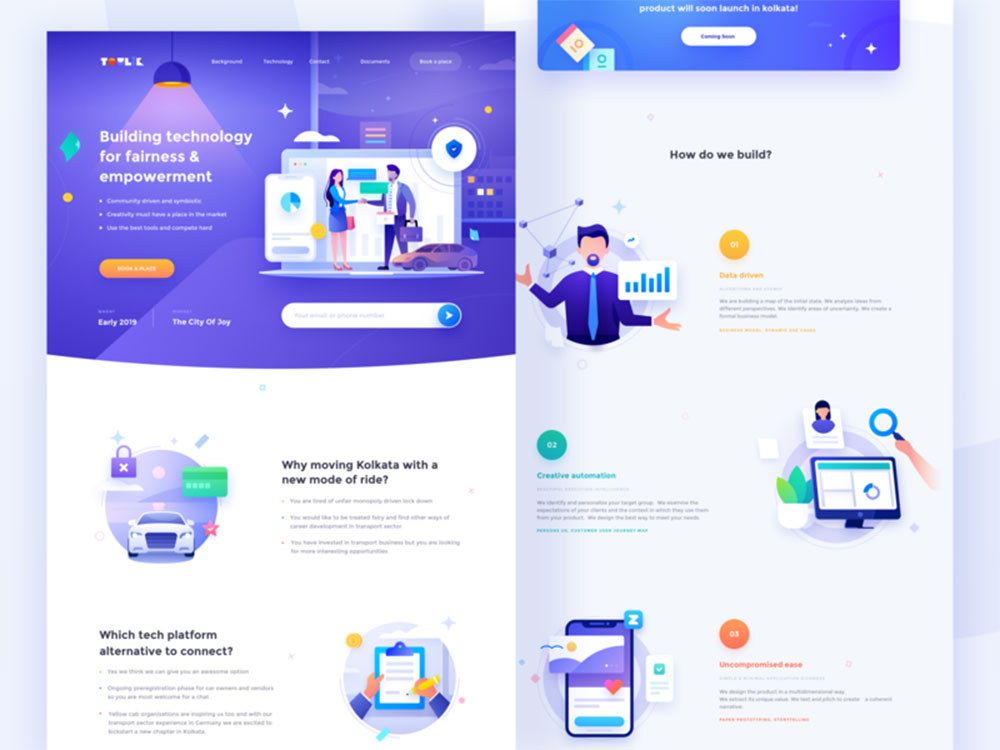Switching to Cloud Computing: Tips, Tricks, and Snags to Be Aware Of

Making the decision to migrate business processes to the cloud is one of the best choices a business can make, but it also comes with a large amount of complications.
Even with the help of a cloud expert, companies that have no knowledge of cloud computing before beginning a migration may find themselves confused.
This is why learning everything there is to know about cloud computing, including the benefits and different types, is so crucial.
What is Cloud Computing?
The first step to improving business processes starts with understanding the nuances of cloud computing. For those who don’t know the term, cloud computing is the on-demand delivery of IT resources over the Internet, as opposed to through a hard-wired connection.
With cloud computing, there is no need to purchase physical hardware to be stored on-site at an office location. Instead, any employee can access company data as needed through their Internet connection, from anywhere in the world.
Key Benefits of Cloud Computing for Businesses
Given the large cost associated with switching to a cloud computing setup, all organizations need to consider the key benefits associated with this switch. Most notable, the three following benefits are the biggest reasons for why a company should make the switch:
1. Improved data security
One of the biggest benefits that cloud computing offers is enhanced data security beyond what normal IT processing can provide. Cloud computing has numerous security features such as multi-factor authentication and automatic network scanning which help to ensure reduced risk of data loss.
When handling sensitive or regulated information, AI hardware rental becomes an invaluable asset. Its dedicated security modules and advanced encryption mechanisms provide an additional layer of protection, ensuring the utmost security for critical data within cloud environments.
2. Greater data processing speeds
Despite cloud computing servers being located far away from an actual physical office where business is being handled, processing speeds are actually quicker than wired in servers. By connecting over the Internet, employees can gain access to company systems and data faster than ever before.
3. Increased insights into data
A unique benefit of cloud computing is the fact that it offers multiple features and plug-ins that enhance the cloud computing experience. Of these many plug-ins, one of the most helpful for businesses is a data analyzer plug-in. This means that the plug-in will pull any actionable information from data so that an employee doesn’t need to do it on their own.
Private vs. Public vs. Hybrid Cloud Computing
There are a number of different types of cloud computing options that a business can consider, with each specific type offering varying benefits. By determining the type that is right for your business needs, the integration and ongoing maintenance of the cloud setup will go far smoother.
First and foremost, a private vs. public cloud setup is the most commonly debated type for businesses. A private cloud setup is a single tenant cloud setup where the networks and all the services are dedicated to only one organization. That organization is responsible for the ongoing maintenance of those servers and also needs to pick and choose which features are included in the setup.
A public cloud setup, on the other hand, is when multiple companies and even individuals make use of the same networks at one time. While the data for the different groups will not be merged, they access the same digital location via the Internet. This option is often far cheaper than a private cloud setup but comes with less flexibility.
Finally, a hybrid cloud computing setup takes elements of both the private and public cloud setups and combines them to essentially get the best of both worlds. With this setup, a company starts up a private cloud for their sensitive information and a public cloud for other business processes that don’t require as much care.
5 Key Tips for a Smooth Migration to the Cloud
Once your organization decides upon the right cloud setup for their business needs, the migration process will begin. There are five main tips all business should utilize when they are beginning their cloud computing migration:
Focus on Migrating One Department at a Time
Rather than attempting to migrate your entire business to the cloud, focus on only migrating one department at a time instead. This will allow your business to spot any potential issues when they arise so that they can be dealt with prior to them compounding and becoming worse.
Hire a Cloud Expert to Assist with the Migration
A unique and beneficial tip to having a successful migration to the cloud is to hire a cloud expert who knows what they are doing. This person can walk you through the entire process from start to finish when it comes to the migration and can also assist in answering any questions you may have as part of the migration.
Constantly Test the Implementation
When the migration and implementation process actually starts, take the time to constantly test the different features one at a time to ensure everything is working properly. This will also help a business identify any potential issues before they become too large, and it can also help an organization determine if certain features are actually unnecessary.
Identify Potential Pain Points Prior to Integration
When building out the migration plan to the cloud for your organization, place an emphasis on identifying the key pain points that may come up during the process. These will be unique from business to business but should be used as a roadmap for determining how the migration will occur.
Be Ready to Adapt
Finally, all businesses need to be ready to adapt and must be flexible when their cloud migration occurs. Things are not likely to go smoothly at first, which is why being able to pivot to a new strategy quickly is so important.
The Bottom Line
With technology changing faster than most people can keep up, staying ahead of the competition is more challenging than ever before. Migrating business processes to the cloud is a great first step, but it’s only the beginning. Once a cloud setup has been initially created, there are countless services and features to consider implementing. While some will be useless for your business needs, others will be crucial. Consider hiring an ongoing cloud expert to assist your organization with their needs in the future so that there are fewer roadblocks.
- Purple Color Palettes Fit for Royalty - 16 May 2024
- How To Find A Font: Top Font Finders To Use - 16 May 2024
- The Guinness Logo History, Colors, Font, And Meaning - 15 May 2024









